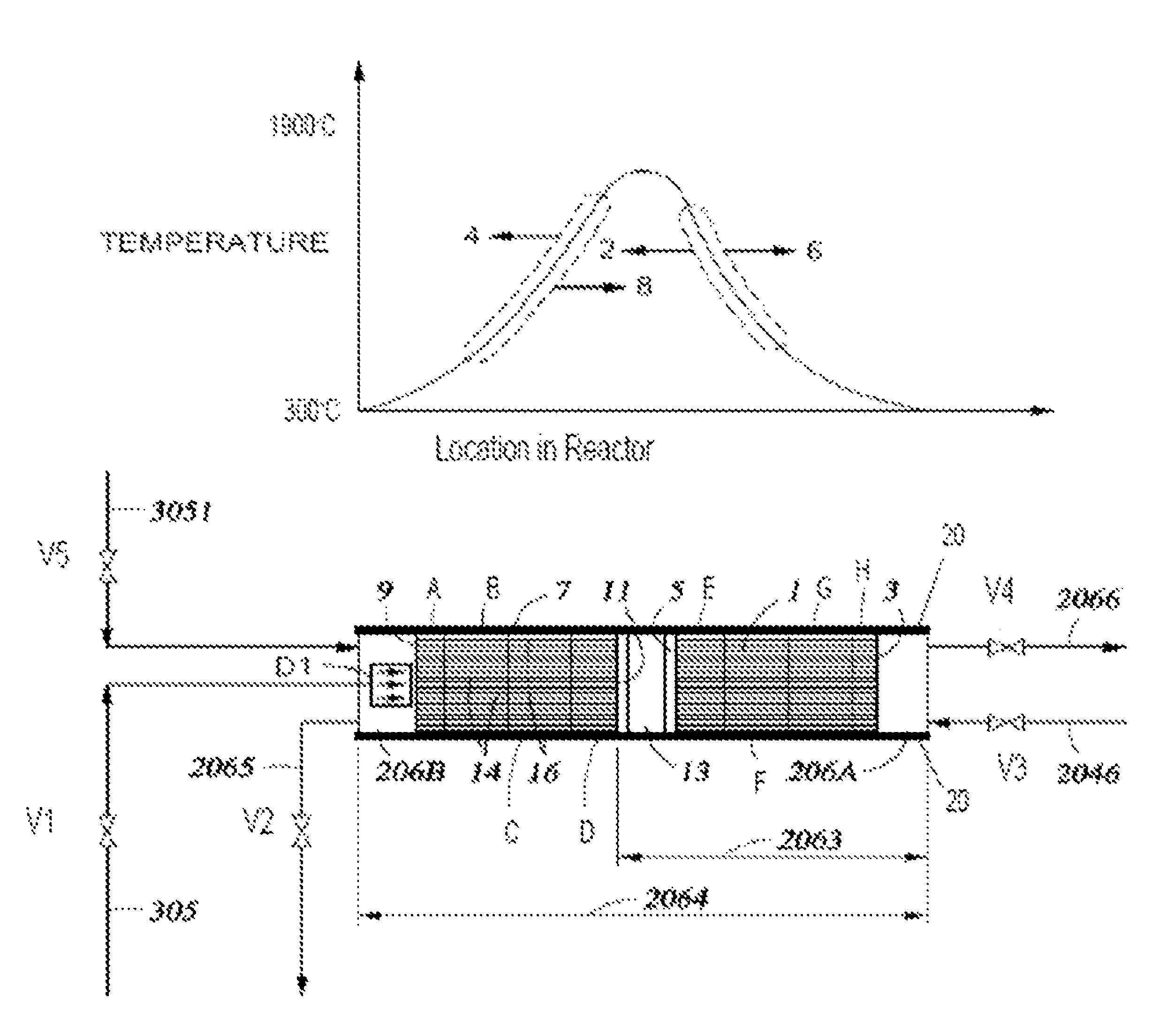Reactor components
a technology of reactor components and components, applied in the direction of lighting and heating apparatus, gas-gas reaction processes, thermal non-catalytic cracking, etc., can solve the problems of short residence time, increase pressure drop, and reduce the length to diameter ratio of the reactor, so as to enhance the reactor and its operation, increase the temperature, and double the overall heat transfer coefficient
- Summary
- Abstract
- Description
- Claims
- Application Information
AI Technical Summary
Benefits of technology
Problems solved by technology
Method used
Image
Examples
Embodiment Construction
[0022]The present disclosure is based in part on the observation that reactor components, such as insulation and process flow components are utilized in different zones within a reactor, e.g., those described in U.S. Pat. No. 7,943,808 and U.S. Patent Pub. App. Nos. 2010 / 0290978 and 2010 / 0292523. The process flow components may include components that manage the flow of process fluids through the internal zones within the reactor and store and release heat to the process fluids, while the insulation components may include components that inhibit the heat transfer from the interior of the reactor to locations external to the reactor, which may also inhibit the flow of process fluids to locations external to the reactor. The reactor components are sensitive to (a) environmental operating conditions; (b) temperature operating conditions; and / or (c) heat transfer properties based on the location within the reactor. In the reactor, heat transfer concerns the exchange of thermal energy fr...
PUM
| Property | Measurement | Unit |
|---|---|---|
| temperature | aaaaa | aaaaa |
| temperature | aaaaa | aaaaa |
| temperature | aaaaa | aaaaa |
Abstract
Description
Claims
Application Information
 Login to View More
Login to View More - R&D
- Intellectual Property
- Life Sciences
- Materials
- Tech Scout
- Unparalleled Data Quality
- Higher Quality Content
- 60% Fewer Hallucinations
Browse by: Latest US Patents, China's latest patents, Technical Efficacy Thesaurus, Application Domain, Technology Topic, Popular Technical Reports.
© 2025 PatSnap. All rights reserved.Legal|Privacy policy|Modern Slavery Act Transparency Statement|Sitemap|About US| Contact US: help@patsnap.com



